Active Recombinant Human DDC Full Length protein, His-tagged
| Cat.No. : | DDC-284H |
| Product Overview : | Recombinant Human DDC protein(Met 1-Glu 480), fused with C-terminal His tag, was expressed in Insect Cells. |
| Availability | April 20, 2025 |
| Unit | |
| Price | |
| Qty |
- Specification
- Gene Information
- Related Products
- Case Study
- Application
- Download
| Species : | Human |
| Source : | Insect Cells |
| Tag : | His |
| Protein Length : | Met 1-Glu 480 |
| Tag : | C-His |
| Form : | Liquid in sterile PBS, pH7.4. |
| Bio-activity : | Measured by its ability to convert the substrate 3, 4-dihydroxy L-phenylalanine (L-Dopa) to 3, 4-dihydroxyphenylethylamine (dopamine). The dopamine product is measured by its absorbance at 340 nm after derivatization with trinitrobenzene sulfonic acid. The specific activity is >1000 pmoles/min/μg. |
| Molecular Mass : | The protein has a calculated MW of 55 kDa. |
| Endotoxin : | <1.0EU per 1μg (determined by the LAL method). |
| Purity : | > 90 % as determined by SDS-PAGE. |
| Storage : | Store it under sterile conditions at -80°C. It is recommended that the protein be aliquoted for optimal storage. Avoid repeated freeze-thaw cycles. |
| Concentration : | 1.0 mg/ml. |
| Reconstitution : | Centrifuge the vial at 4°C before opening to recover the entire contents. |
| AA Sequence : | MNASEFRRRGKEMVDYMANYMEGIEGRQVYPDVEPGYLRPLIPAAAPQEPDTFEDIINDVEKIIMPGVTHWHSPYFFAYFPTASSYPAMLADMLCGAIGCIGFSWAASPACTELETVMMDWLGKMLELPKAFLNEKAGEGGGVIQGSASEATLVALLAARTKVIHRLQAASPELTQAAIMEKLVAYSSDQAHSSVERAGLIGGVKLKAIPSDGNFAMRASALQEALERDKAAGLIPFFMVATLGTTTCCSFDNLLEVGPICNKEDIWLHVDAAYAGSAFICPEFRHLLNGVEFADSFNFNPHKWLLVNFDCSAMWVKKRTDLTGAFRLDPTYLKHSHQDSGLITDYRHWQIPLGRRFRSLKMWFVFRMYGVKGLQAYIRKHVQLSHEFESLVRQDPRFEICVEVILGLVCFRLKGSNKVNEALLQRINSAKKIHLVPCHLRDKFVLRFAICSRTVESAHVQRAWEHIKELAADVLRAEREHHHHHHHHHH |
| Gene Name | DDC dopa decarboxylase (aromatic L-amino acid decarboxylase) [ Homo sapiens ] |
| Official Symbol | DDC |
| Synonyms | DDC; dopa decarboxylase (aromatic L-amino acid decarboxylase); aromatic-L-amino-acid decarboxylase; AADC; |
| Gene ID | 1644 |
| mRNA Refseq | NM_000790 |
| Protein Refseq | NP_000781 |
| MIM | 107930 |
| UniProt ID | P20711 |
| ◆ Recombinant Proteins | ||
| DDC-141H | Recombinant Human Dopa Decarboxylase, His-tagged | +Inquiry |
| Ddc-2490M | Recombinant Mouse Ddc Protein, Myc/DDK-tagged | +Inquiry |
| DDC-12525Z | Recombinant Zebrafish DDC | +Inquiry |
| DDC-0240H | Recombinant Human DDC Protein (M1-E480), Tag Free | +Inquiry |
| DDC-2428HF | Recombinant Full Length Human DDC Protein, GST-tagged | +Inquiry |
| ◆ Cell & Tissue Lysates | ||
| DDC-513MCL | Recombinant Mouse DDC cell lysate | +Inquiry |
| DDC-724HCL | Recombinant Human DDC cell lysate | +Inquiry |
Case 1: Tsopela V, et al. Biochim Biophys Acta Mol Cell Res. 2024
L-Dopa Decarboxylase (DDC) regulates autophagy in hepatocytes via dopamine/serotonin synthesis, with dengue virus (DENV) infection suppressing DDC to block autophagosome-lysosome fusion and enhance viral replication. Silencing DDC or inhibiting its enzymatic activity impairs autophagy completion and oxidative phosphorylation, while autophagy induction upregulates DDC, linking metabolic pathways to antiviral responses and highlighting DDC as a therapeutic target in viral infections.
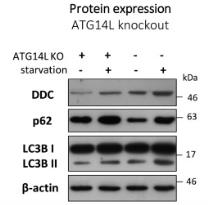
Fig1. Western blot analysis using antibodies targeting DDC, p62, LC3B and β-actin protein levels.
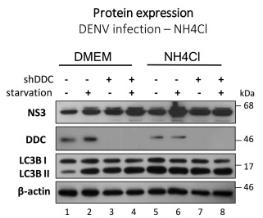
Fig2. DENV NS3, DDC, LC3B, and β-actin immunoblotting.
Case 2: Florou D, et al. J Cancer Res Clin Oncol. 2013
L-Dopa Decarboxylase (DDC) emerges as a prognostic biomarker in gastric adenocarcinoma, with higher expression linked to intestinal histotype, distal tumor localization, and improved disease-free survival (p=0.031) and overall survival (p=0.016). PCR and immunoblot analyses highlight DDC’s clinical relevance, positioning it as a potential therapeutic target and stratification tool for precision oncology in high-risk gastric cancer patients.
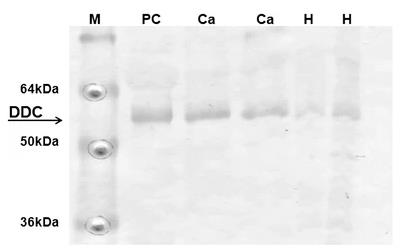
Fig1. Depiction of DDC immunological detection in gastric tissue samples.
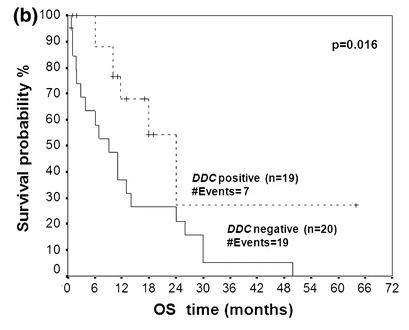
Fig2. Overall survival (OS) of DDC-positive or DDC-negative gastric cancer patients.
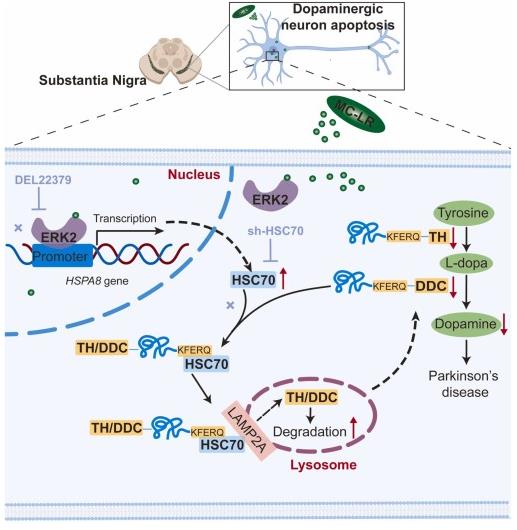
Fig1. Schematic representation of the molecular mechanism by which MC-LR disrupts dopamine synthesis. (Huifang Wu, 2024)
Not For Human Consumption!
Inquiry
- Reviews
- Q&As
Ask a Question for All DDC Products
Required fields are marked with *
My Review for All DDC Products
Required fields are marked with *
Inquiry Basket


